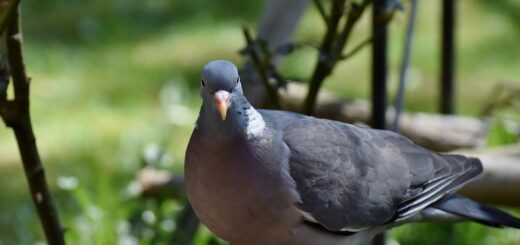Sand Martin
Sand Martin: The Small Bird with a Big Impact
When it comes to the world of birds, there are some species that capture the imagination of bird enthusiasts around the globe. The Sand Martin is one such bird that has intrigued scientists and birdwatchers for centuries. With its small size and remarkable migratory patterns, the Sand Martin has become a fascinating subject of study for ornithologists and a beloved sight for birdwatchers. In this article, we will delve into the world of the Sand Martin, exploring its habitat, behavior, and the important role it plays in the ecosystem.
Physical Characteristics
The Sand Martin, also known as the bank swallow, is a small passerine bird that belongs to the swallow family. It is renowned for its agile flight and distinctive appearance. The bird measures around 12 cm in length with a wingspan of 29–32 cm, making it one of the smallest members of the swallow family. The Sand Martin has a brown upper body, a white underbody, and a slightly forked tail. Its wings are long and pointed, enabling it to perform impressive aerial acrobatics as it hunts for insects.
One of the most striking physical characteristics of the Sand Martin is its small, dark beady eyes and short, pointed bill. These features are perfectly adapted for its insectivorous diet, allowing it to accurately track and capture flying insects while in mid-air. The bird’s slender body and streamlined shape further enhance its flying abilities, making it a master of the skies.
Habitat and Distribution
The Sand Martin is a widespread species that can be found across Europe, Asia, and North Africa. It is known for its preference for nesting in sandy cliffs and banks, hence its name. The bird is highly adaptable and can also be found in a variety of habitats, including gravel pits, quarries, and riverbanks. Unlike many other migratory birds, the Sand Martin is not known for its territorial behavior and often nests in large colonies, creating bustling communities during the breeding season.
During the winter months, the Sand Martin undertakes an incredible migratory journey from its breeding grounds in Europe and Asia to warmer regions in Africa. This annual migration spans thousands of kilometers, with the birds traveling across deserts, mountains, and bodies of water to reach their wintering grounds. The Sand Martin’s remarkable navigational abilities and endurance make it a truly remarkable species, captivating the attention of scientists and bird enthusiasts alike.
Behavior and Feeding Habits
One of the most fascinating aspects of the Sand Martin is its feeding behavior. As an insectivorous bird, it primarily feeds on flying insects such as flies, mosquitoes, and beetles. The Sand Martin is a highly skilled aerial hunter, using its swift and agile flight to catch insects on the wing. It can often be seen darting and weaving through the air in pursuit of its prey, making it a thrilling sight for birdwatchers to observe.
During the breeding season, the Sand Martin’s feeding habits are crucial to the survival of its offspring. The birds tirelessly forage for food to feed their young, making countless trips to and from their nesting sites. This dedication to providing for their young showcases the Sand Martin’s remarkable commitment to its offspring and the survival of its species.
Ecological Importance
As a species that primarily feeds on flying insects, the Sand Martin plays a vital role in controlling insect populations in its native habitats. By preying on pests and insects that can be harmful to crops and vegetation, the Sand Martin helps to maintain the ecological balance of its ecosystem. In addition, the bird’s nesting activities contribute to the natural erosion of sandy cliffs and banks, creating new habitats for other species and promoting biodiversity in the environment.
Furthermore, the Sand Martin’s annual migration has far-reaching implications for the ecosystems it inhabits. The bird’s presence in different regions throughout the year contributes to the dispersal of seeds and the transfer of nutrients, influencing the flora and fauna of diverse habitats. This interconnectedness underscores the importance of the Sand Martin as a keystone species, with far-reaching effects on the natural world.
Conservation Status and Threats
Despite its adaptability and widespread distribution, the Sand Martin faces several threats to its population. Habitat loss due to urbanization, agricultural development, and quarrying activities has led to the decline of suitable nesting sites for the birds. In addition, changes in land use and the alteration of natural river systems have further impacted the Sand Martin’s breeding habitats, posing a significant threat to its survival.
Climate change is also a pressing concern for the Sand Martin, as alterations in weather patterns and temperature can disrupt the bird’s migratory routes and impact its ability to find suitable food sources. These challenges underscore the importance of conservation efforts to protect the Sand Martin and its habitats, ensuring the long-term survival of this remarkable species.
Conclusion
The Sand Martin is a small bird with a big impact, playing a crucial role in the ecosystems it inhabits. From its remarkable migratory journeys to its vital contributions to pest control and habitat formation, the Sand Martin showcases the interconnectedness of the natural world and the importance of preserving biodiversity. By studying and understanding this fascinating species, we gain valuable insights into the intricate dynamics of our environment and the significance of protecting all species, no matter how small. As we strive to safeguard the habitats of the Sand Martin, we also work towards conserving the delicate balance of nature that sustains us all.
